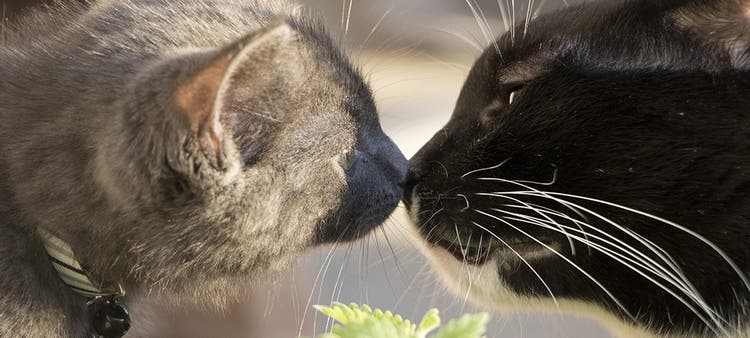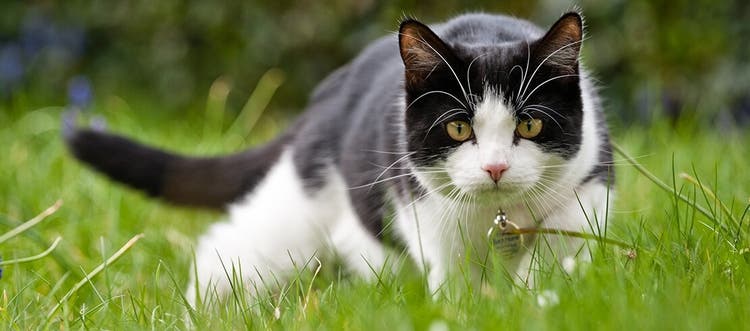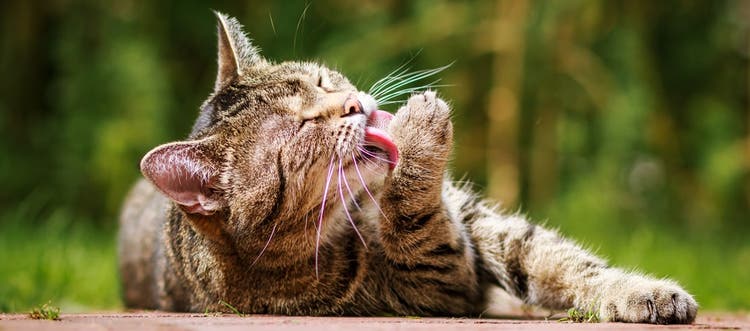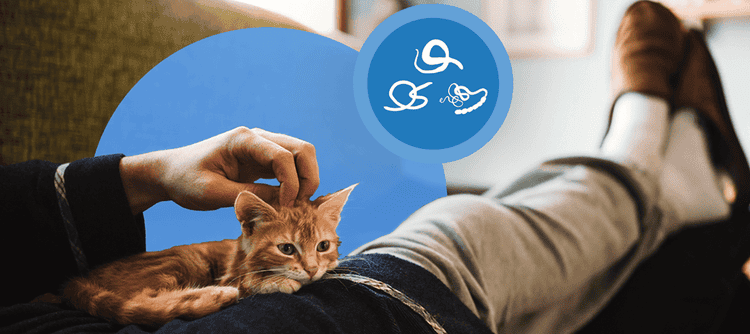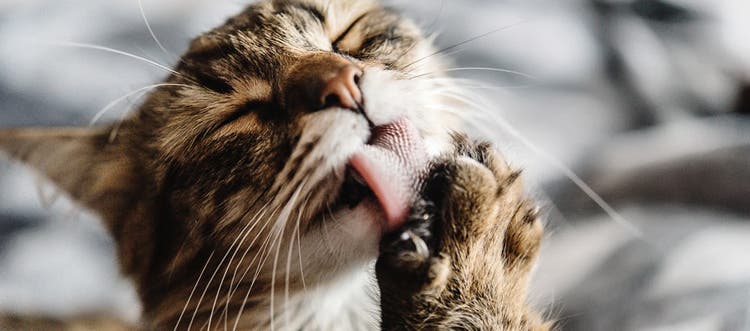Here’s how cats can pick up intestinal worms.
Most cats can pick up several types of intestinal worms during their lifespan, but the most common are roundworms, hookworms and tapeworms. These parasites can cause a range of health issues, including vomiting, diarrhea and malnutrition.
Understanding how cats get worms can help cat owners protect their pets from these intestinal parasites. Here are the most common ways.
From Worm Eggs in the Environment
Cats and other pets infested with roundworms pass microscopic eggs in their feces. These eggs can leach into the surrounding environment, like the soil in your garden or yard, where they can survive for long periods of time. If your cat accidentally eats these eggs while sniffing or licking the ground outside, they can develop a new roundworm infection. Cats can even become infected inside the house, if another pet or person has accidentally brought the roundworm eggs inside.
Additionally, hookworms can penetrate a cat’s skin if your pet happens to walk or lie down in a contaminated area.
From Fleas
If your cat is dealing with a flea infestation, they’re also at risk of picking up an intestinal worm. In fact, the most common way for a cat to get tapeworms is by eating infected fleas carrying the larval form of the worm while grooming themselves or other cats.
Cats are especially at risk for tapeworms because they are such good groomers. A cat will often ingest any fleas present during grooming — so fleas carrying tapeworm larvae will often end up in their gut. You might not even realize your cat has fleas because they will have groomed or eaten all of them off.
From Hunting and Scavenging
Rodents, rabbits, birds and even insects eat parasite eggs. However, these animals are known as secondary or intermediate hosts because the eggs do not develop into adults once ingested, but instead remain dormant. When a cat consumes all or part of these animals while hunting or scavenging, the dormant parasite wakes up and grows into an adult worm in the cat’s intestines.
From the Mother’s Milk
Unfortunately, it’s easy for kittens to get worms before they leave the comfort of home, as untreated mothers can pass roundworm larvae to their kittens through their milk. Because kittens are so small and vulnerable, this can be particularly dangerous, causing diarrhea, vomiting, poor weight gain and a dull coat.
When Is My Cat at Risk for Intestinal Worms?
Your cat can be at risk of acquiring intestinal worms at any time throughout the year. Many of the eggs released into the environment are very durable and can survive environmental extremes, often for up to a few years.
It’s important as a cat owner to be on the lookout for worms year-round, especially if your cat likes to go outside and hunt. Be especially alert during warmer months when wildlife becomes more active, potentially spreading and dispersing eggs into the environment and increasing the chances of interactions with your cat.
What Are the Symptoms of Intestinal Worms?
There are a variety of signs or symptoms your cat may show if infected with worms, but the most common are typically diarrhea and vomiting. Other possible signs of an intestinal worm infection in your cat include:
- Spaghetti-like worms in your cat’s stool or vomit
- Weight loss
- A bloated belly
- Coughing
- Dehydration
Though intestinal parasites in adult cats aren’t generally life-threatening, severe cases can result in death. If you suspect your cat might have an intestinal worm infection, contact your veterinarian.
How to Treat Your Cat for Worms
Deworming products can help save your cat from health issues and discomfort; your vet can help you determine how often worming treatments should be administered for your pet. There are several types of worming treatments available, including spot-on wormers and tablets. Many deworming products are designed to kill every type of intestinal worm commonly found in cats, so you and your pet can focus on what matters most: spending quality time together playing and snuggling.

